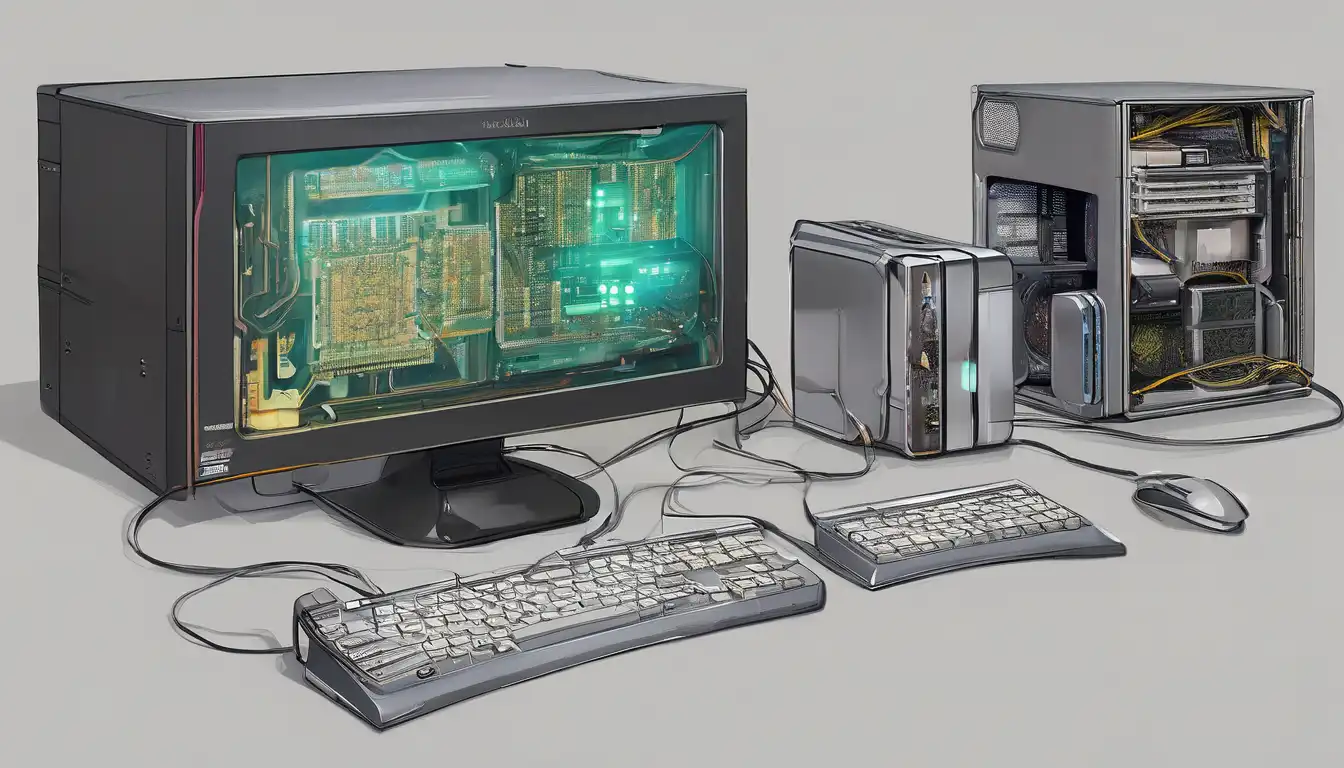Revolutionary Advances in Computer Hardware Technology
The landscape of computer hardware technology is undergoing unprecedented transformation, with innovations emerging at an accelerated pace. From quantum computing breakthroughs to AI-optimized processors, the latest developments are reshaping how we interact with technology and pushing the boundaries of computational power. These advancements not only enhance performance but also address critical challenges in energy efficiency, thermal management, and sustainability.
Next-Generation Processors and Architecture
Modern processors have evolved beyond traditional performance metrics to incorporate specialized capabilities for artificial intelligence and machine learning workloads. Companies like Intel, AMD, and ARM are introducing chips with dedicated AI accelerators that can handle complex neural network computations more efficiently than ever before. The shift towards heterogeneous computing architectures allows different types of processing units to work in harmony, optimizing performance for specific tasks while maintaining energy efficiency.
Recent innovations include 3D stacking technology, where multiple layers of transistors are vertically integrated, dramatically increasing transistor density without expanding the physical footprint. This approach enables faster data transfer between components and reduces latency, resulting in significant performance gains. Additionally, new manufacturing processes reaching 3nm and below are delivering unprecedented transistor density, allowing for more powerful processors in smaller form factors.
Memory Technology Breakthroughs
The memory sector has witnessed remarkable innovations, particularly in DDR5 RAM technology and next-generation storage solutions. DDR5 memory modules offer substantially higher bandwidth and improved power efficiency compared to their predecessors, enabling faster data processing for demanding applications like video editing, scientific computing, and gaming. These advancements are complemented by new error correction technologies that enhance system stability and reliability.
Storage technology has seen equally impressive progress with the advent of PCIe 5.0 SSDs, which deliver read and write speeds previously unimaginable. These drives leverage advanced NAND flash technology and sophisticated controllers to achieve sequential read speeds exceeding 10,000 MB/s, revolutionizing how quickly systems can access and process large datasets. The integration of computational storage, where processing occurs directly within storage devices, further optimizes data-intensive workflows.
Graphics and Display Innovations
Graphics processing units have evolved beyond traditional rendering to become essential components for AI training, scientific simulation, and real-time ray tracing. The latest GPU architectures incorporate dedicated ray tracing cores and tensor cores specifically designed for AI acceleration. These developments enable photorealistic graphics in gaming and professional visualization while simultaneously accelerating machine learning applications.
Display technology has kept pace with these advancements, with high-refresh-rate monitors supporting 360Hz and beyond becoming increasingly accessible. The emergence of microLED and mini-LED technologies offers superior contrast ratios, brighter displays, and more precise local dimming compared to traditional LCD panels. These innovations are particularly beneficial for content creators, gamers, and professionals requiring color accuracy and visual fidelity.
Cooling and Power Management Solutions
As component power densities increase, thermal management has become a critical focus area for hardware engineers. Advanced cooling solutions incorporating liquid metal thermal compounds, vapor chamber designs, and phase-change materials are becoming standard in high-performance systems. These technologies efficiently dissipate heat from concentrated hotspots, allowing components to maintain optimal performance under sustained heavy loads.
Power delivery systems have also seen significant innovation, with digital voltage regulation modules providing more precise power control and improved efficiency. The integration of smart power management features enables systems to dynamically adjust power consumption based on workload demands, reducing energy waste while maintaining performance. These advancements contribute to more sustainable computing practices without compromising capability.
Connectivity and Peripheral Advancements
The latest connectivity standards are transforming how devices communicate and interact. USB4 and Thunderbolt 4 technologies offer unprecedented data transfer speeds, power delivery capabilities, and display connectivity through a single universal port. These standards simplify cable management while providing the bandwidth necessary for high-resolution displays, fast storage devices, and powerful peripherals.
Wireless technology has advanced significantly with Wi-Fi 6E and the emerging Wi-Fi 7 standards, offering reduced latency, increased bandwidth, and improved reliability. Bluetooth 5.3 and later versions provide enhanced audio quality and lower power consumption for wireless peripherals. These connectivity improvements enable seamless integration between devices and support the growing ecosystem of smart peripherals and IoT devices.
Emerging Technologies and Future Directions
Several emerging technologies promise to redefine computer hardware in the coming years. Quantum computing systems, while still in early stages, are showing potential for solving complex problems intractable for classical computers. Neuromorphic computing architectures, inspired by biological neural networks, offer energy-efficient alternatives for specific AI workloads. Photonic computing, which uses light instead of electricity for data transmission, could revolutionize data center efficiency and performance.
The integration of hardware security features has become increasingly important, with technologies like hardware-based encryption, secure enclaves, and memory protection units becoming standard in modern processors. These features protect against sophisticated cyber threats while maintaining system performance. As hardware continues to evolve, the focus on security, sustainability, and specialized acceleration will likely drive future innovation cycles.
Impact on Various Industries
These hardware innovations are transforming industries across the spectrum. In healthcare, advanced computing hardware enables real-time medical imaging analysis and accelerates drug discovery research. The financial sector benefits from faster transaction processing and improved risk modeling capabilities. Creative professionals enjoy reduced rendering times and enhanced workflow efficiency, while scientific researchers can tackle increasingly complex simulations and data analysis tasks.
The gaming industry continues to push hardware boundaries, with real-time ray tracing, AI-enhanced graphics, and immersive virtual reality experiences becoming more accessible. Educational institutions are leveraging these advancements to provide more interactive learning experiences and support computational research. As hardware technology continues to advance, its impact will extend to virtually every aspect of modern life, driving innovation and enabling new possibilities across all sectors.
The rapid pace of innovation in computer hardware technology shows no signs of slowing, with research and development efforts focused on overcoming current limitations and exploring new paradigms. As these technologies mature and become more accessible, they will continue to transform how we work, create, and interact with digital systems, paving the way for unprecedented computational capabilities and applications.
